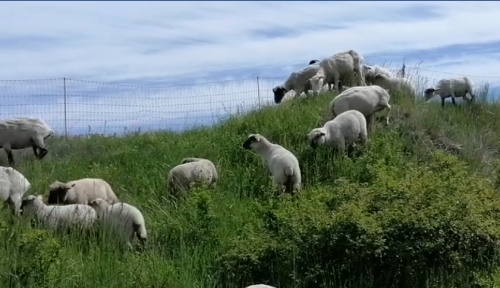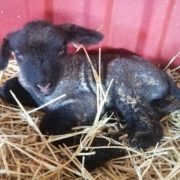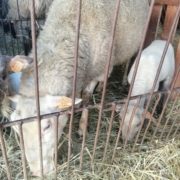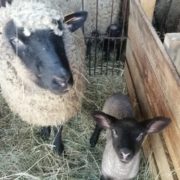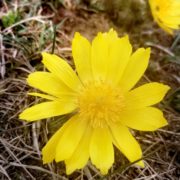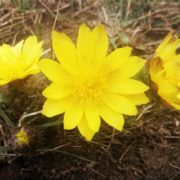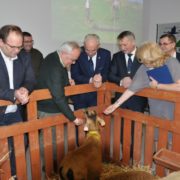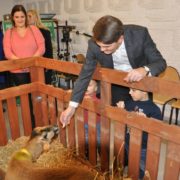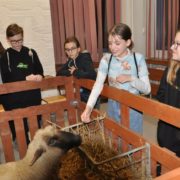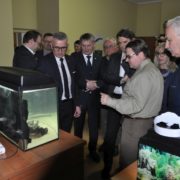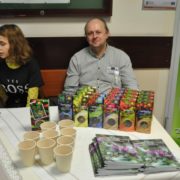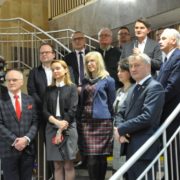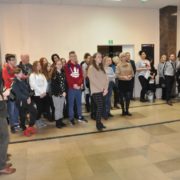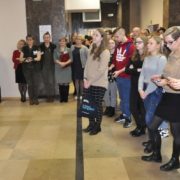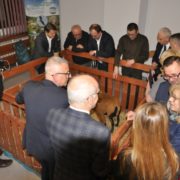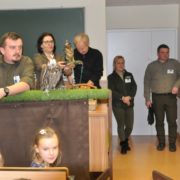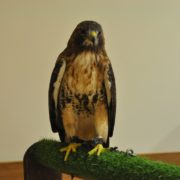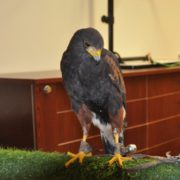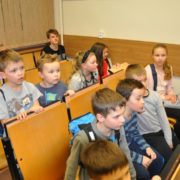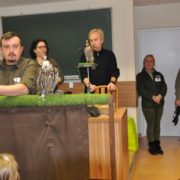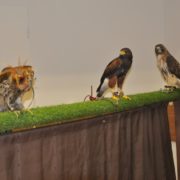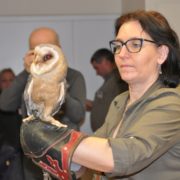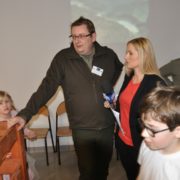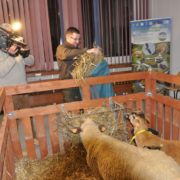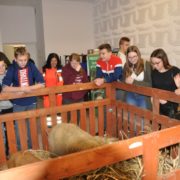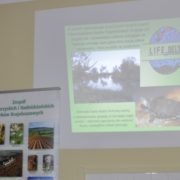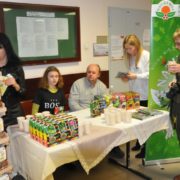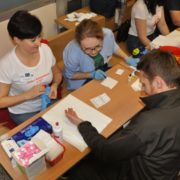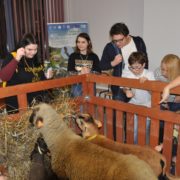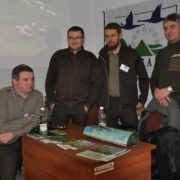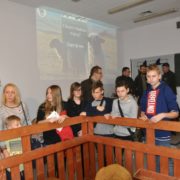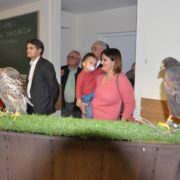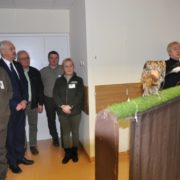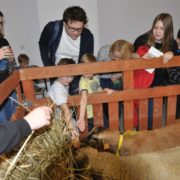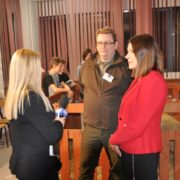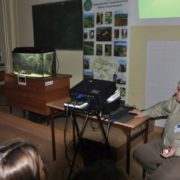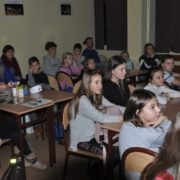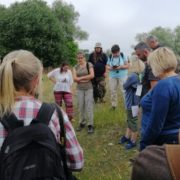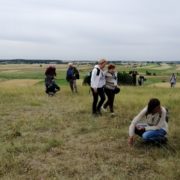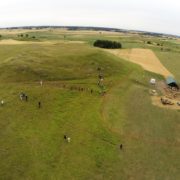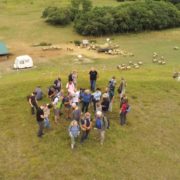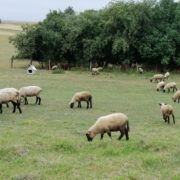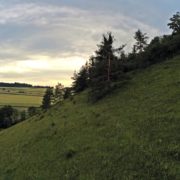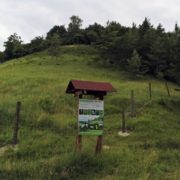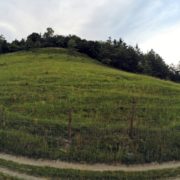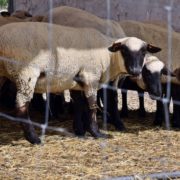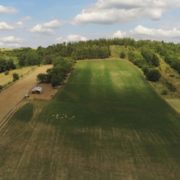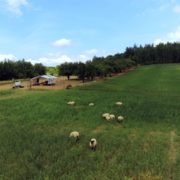News
Blackhead sheep and Olkusz sheep, once again, have come to the xerothermic grasslands of Ponidzie
The animals can be seen in the pasture in Skowronno Dolne, three kilometers from Pińczów. In total, all over Ponidzie, sheep are bred by six farmers. Among the breeders is Grzegorz Szymański, owner of 200 animals – Radio Kielce informs about our project.
– The sheep graze on the pasture from 7.00 to 19.00. The employees from the Świętokrzyskie and Nadnidziańskie Landscape Parks help us a lot in breeding – he says. As he explains, the complex of parks provides the breeders with the necessary infrastructure for grazing, for example, fences connected to electricity, which prevent animals from entering an area that is not intended for them.
Henryk Szymański, the breeder’s father, stresses that the lamb is considered very tasty. He emphasizes that meat is becoming a delicacy in Ponidzie.
– It’s mostly healthy meat. The sheep are fed on herbs, fodder without modified soya. Properly treated, it can definitely surprise one with its taste” – he assures.
Wojciech Sołtysiak, the manager of the already completed project for the protection of valuable natural habitats in Ponidzie, conducted by the Świętokrzyskie and Nadnidziańskie Landscape Parks Complex, informs that farmers continue grazing animals. He reminds that sheep, as natural mowers, were supposed to help protect valuable xerothermic grasslands, i.e. thermophilic and light meadow habitats. Without grazing, the grass would be overgrown. Since 2014, the sheep have been going out to pasture and eating bush and tree seedlings.
– The sheep graze in Ponidzie on about 60 hectares. Mainly in the area of the Pińczów municipality near Garb Pińczowski in Skowronno Dolne and Górne, in Wola Chroberska and on a small fragment of the forest in Młodzawa. We started the project with 200 sheep. Now, there are between 600 and 700 of those sheep”, he says.
Although sheep meat from Ponidzie is valuable, wool has no greater value. But the sheep must be sheared anyway. Breeders do it once a year. Shearing 200 sheep takes circa 4 hours.
Dictamnus – a burning Moses bush in bloom
One of the plants under active protection within the Life+ project called „Protection of valuable natural habitats in Ponidzie” is Dictamnus (Dictamnus albus L.). The plant is covered with glands that secrete flammable essential oils, making it smell like lemon. At elevated temperatures, the oils spontaneously ignite, hence the second name of the plant “burning Moses bush”. These compounds, on contact with the body, can cause burns in some people.
At present, one can see those plants in bloom on the seed plantation at the seat of the Świętokrzyskie and Nadnidziańskie Landscape Parks Complex. Dictamnus blooms from late May to July. Its flowers are pale pink, with a distinct, dark innervation, but sometimes also white. The plant blooms late — after about 3–4 years from seeding. Older specimens should not be replanted.
Dictamnus was first described in Chinese medical texts from around 600 AD. The bush was also described by Aristotle. In the Middle Ages it was used externally after being bitten by a viper and internally for poison treatment. The seeds were used to treat epilepsy and plague, and the essential oil of the flowers was used for lubrication in rheumatic diseases. The root was a treatment agent for difficult-healing wounds, gastric neurosis and urolithiasis.
At present, Dictamnus provides herbal material, which is leaves, flowers, root and seeds harvested from cultivated plants.
It was brought to Poland from the south-east, through Podole region. It is a steppe species, it grows in visible dry deciduous forests. It was most often found near Włocławek, in Kulin and in the Grabowiec forest-steppe reserve near Bogucice (this is where the seeds were collected for the plot near the parks).
A large number of flowering plants will provide an increased amount of seeds in the current vegetation season, which will be sown by the park staff to the natural places of occurrence of the plant. Dictamnus can grow up to 20 years in a convenient position. If the seed yield is comparably high in the following years, the measures taken will be able to significantly increase the plant population.
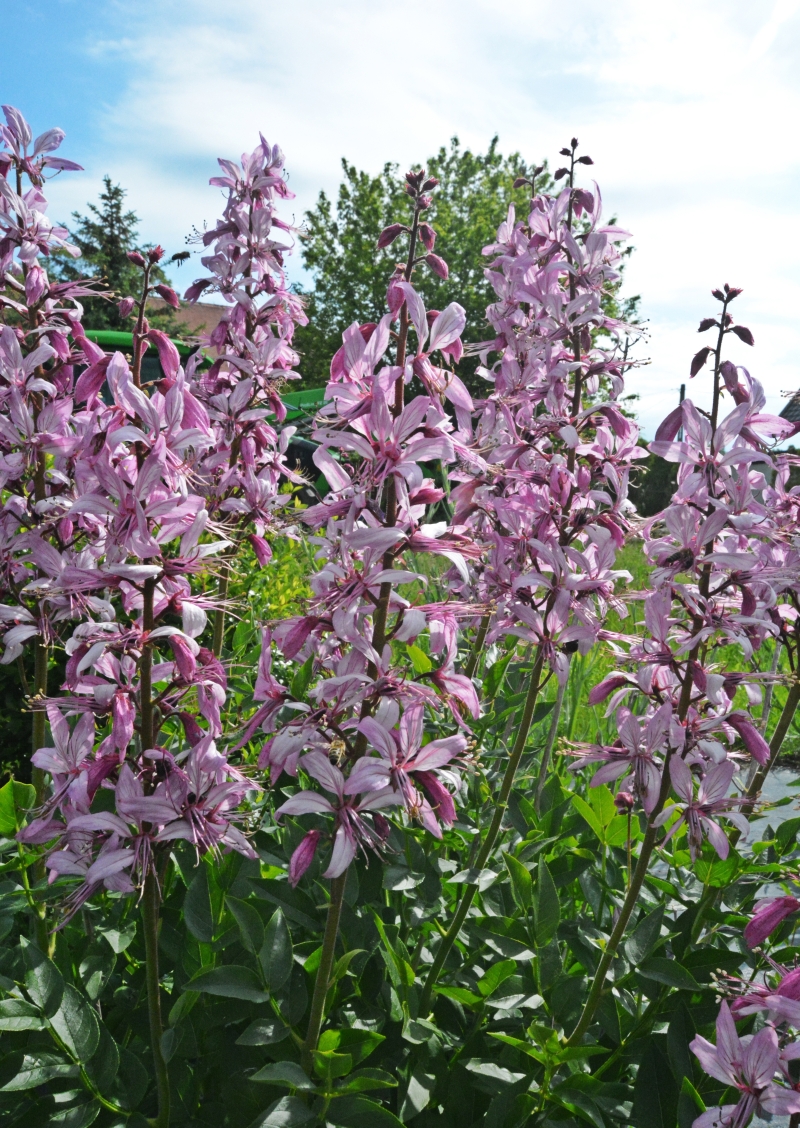
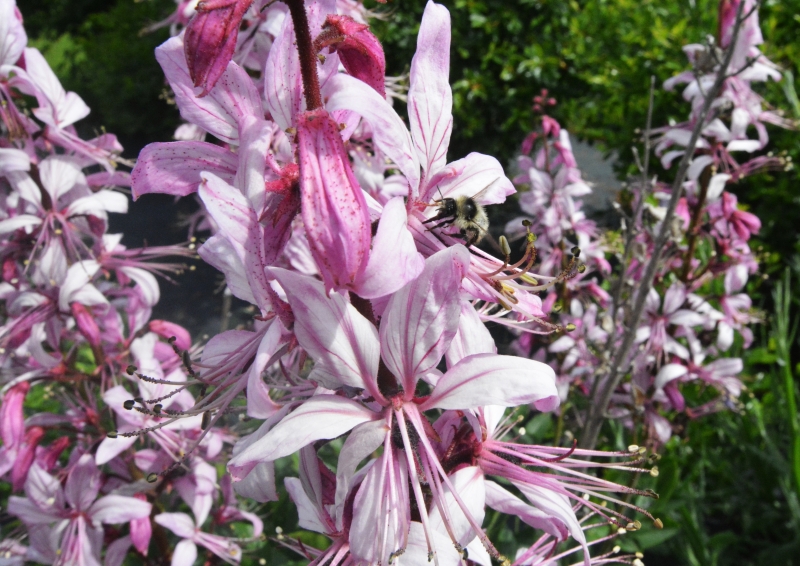
Polish primitive horses in Wierciszów
Polish primitive horses are the only indigenous, primitive breed of horses originating from wild ancestors called tarpans, which until the end of the 18th century were found on the Polish-Lithuanian borderland. The last wild tarpan was killed in 1879 in southern Ukraine, the last representative of the breed in captivity died in 1887.
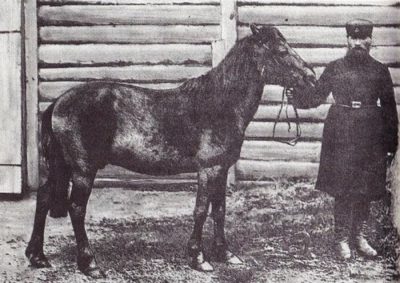
The only known photograph of a living tarpan, taken at the end of the 19th century at the Moscow Zoo.
These animals lived in groups of several dozen specimens, each group was led by the strongest male. They were strong, sturdy horses, resistant to disease and low temperatures. Despite their small height, they were fast and agile and were able to defend themselves effectively against predators. The tarpans were often captured and then tamed and used e.g. in agriculture. By cross-breeding them with domestic horses, peasants unknowingly contributed to the creation of a primitive breed called Polish primitive horses.
The most typical features of Polish primitive horses are considered:
– small height (average specimen at the withers reaches 145cm),
– long lush foretop and tail,
– mousy coat, with a dark bar running through the back,
– high resistance to adverse conditions and poor quality of feed,
– high fertility.
This breed is still considered to be in danger of extinction, which is why ZŚiNPK became interested in their breeding. These friendly, intelligent and, when it is necessary, brave half-wild animals are used as “live mowers” to protect one of the most valuable natural sites in Ponidzie. The horses stay in the habitat all year round. In Autumn and Winter, during rain or heat, they can hide in a specially set up shelter. ZŚiNPK employees observe the herd but intervene only in important cases, providing water and properly balanced feed where necessary. The herd which is taken care of by ZŚiNPK has 9 specimens and already 2 foals were born here.
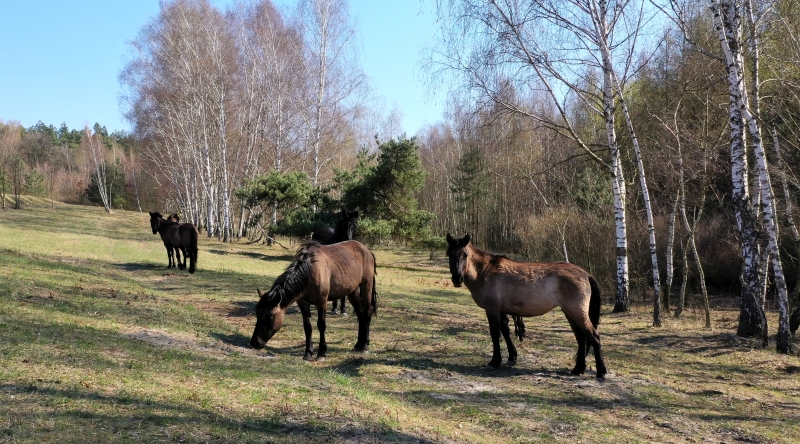
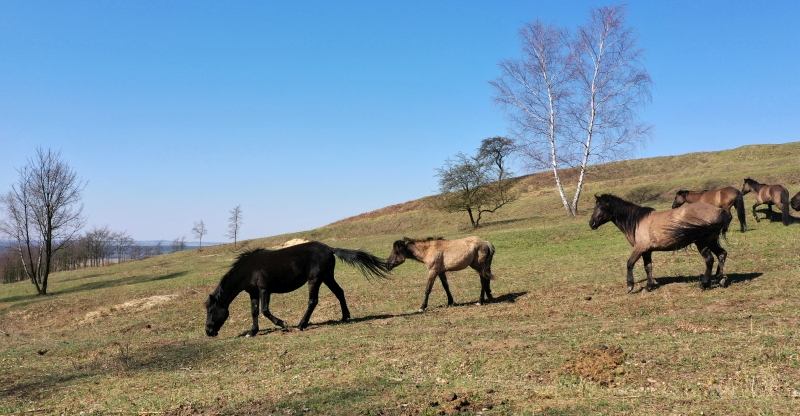

Lambing in Ponidzie!
Flocks of Ponidzie are lambing at the present. Nearly 70 new lambs were born to one of our breeders in Skowronno Dolne.
The grazing season will soon begin in Ponidzie. The Blackhead sheep and Olkusz sheep, which have become a local tourist attraction, will once again be on xerothermic grasslands.
In Spring, we will be able to see them on our project areas.
Spring wakes up in Ponidzie
After a mild Winter, all nature in Ponidzio is waking up to life. In the town of Skowronno Dolne, where the LIFE Project was carried out, Adonis vernalis, which is characteristic of xerothermic grasslands, was in bloom.
Adonis vernalis is a perennial plant belonging to the buttercup family, blooms from April to May and mainly occurs on xerothermic grasses, heathland and pine forests. It grows only on a lime or gypsum substrate. The whole plant is poisonous.
LIFE+ during the “Biologists’s Night”
On 10 January 2020 we participated in the Biologistss Night organized by the Institute of Biology of Jan Kochanowski University in Kielce. The motto of this year’s edition was 'Global Climate Change'.
As every year, there was no shortage of attractions. Under the supervision of scientists one could perform experiments, make microscopic observations, ask questions or take part in discussions during lectures, as well as see “living mowers” or invasive species such as: red-eared slider or dwarf catfish.
The Biologists' Night was also attended by employees of the Świętokrzyskie and Nadnidziańskie Landscape Parks Complex, who prepared workshops for children, teenagers and adults on species subject to both legal protection and threatening our native fauna and flora. The event was accompanied by quizzes, puzzles and a presentation of invasive species, including the red-eared slider, the orconectes limosus and the dwarf catfish.
Nature enthusiasts had the opportunity to admire sheep from the breeding farm run in Ponidzie as part of the Life+ project entitled: “Protection of valuable natural habitats in Ponidzie” implemented by ZŚiNPK, completed in December 2018. During the Biologists’ Night, a new LIFE17 NAT/PL/000018 project entitled “Renovation of the inland Nida Delta” was also presented.
Natur-Vit, company in cooperation with an employee of our organizational unit, Dr Wojciech Szymański, presented the beneficial effects of herbs and fruits. As part of the Biologists’ Night also an “Eye to eye with a predatory bird” meeting with falconers and their charges from the “Rabiec” Horse Falconers Group took place. Thank you for visiting! See you next year!
„Botany without borders”
On July 5th, 2019, in the area of Szaniecki Landscape Park, field session of the 58th Congress of the Polish Botanical Society was commited, under the slogan „Bothany without borders”.
The session, whose main organizer was the Krakow branch of the Polish Botanical Society was attended by emplyees of the our Complex of Landscape Parks: Anna Chwalik-Borowiec phd and scientific consultant of LIFE projects Wojciech Szymanski phd.
Over 50 botanists from all over Poland and from abroad had the opportunity to visit Ostoja Stawiany, where LIFE+ project was implemented. During the session, participants learned about ecological, economic and social benefits of extensive sheep grazing. Moreover, examples of the use of animals for active protection of nature and their important role in protection and maintaining of calcareous grasslands were discussed.
„Upgraded” pasture in Wola Chroberska
We have completed the work on fencing the grazing area in Wola Chroberska. For this purpose we used a forest net, which will perfectly protect the sheep from getting out the area but also improve the work related to the care of the herd. To prevent the overgrazing parts of the calcareous grassland, the interior will be fenced by the electric shepard`s grids, in accordance with needs.
Immediately after completion of the work, sheep were transported to the pasture, where took care of mowing.
Inspection of the project by National Fund for Environmental Protection and Water Management.
The project „Protection of valuable natural habitats in Ponidzie” was implementd by the Complex of Swietokrzyskie and Nida River Landscape Parks. The total cost of the project was over PLN 4.6 milion with co-finansing from National Fund was just over PLN 2 million.
The project started on June 1st, 2014 and ended od December 1st 2018. EU contribution helped to protect valuable natural habitats in Ponidzie.
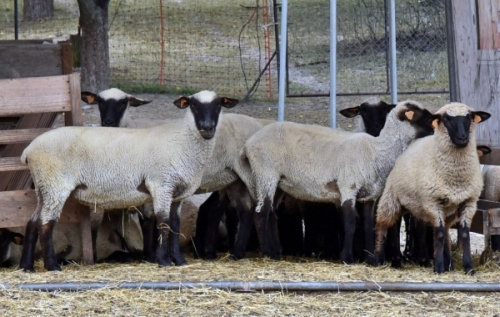
The main goal of the project was to improve the condition of habitats such as semi-natural meadows with thermophilic plants – calcareous grasslands, where Carlina onopordifolia and Serratula lycopifolia grows. The project aims to protect the population of these two plant species. It is that their meadow habitats that have been disappearing in the recent years, overgrowed by shrubs and trees. Sheep that graze the meadows become „natural mowers”, eat high grass and reveal soil allows the xerothermic vegetation to grow.
On March 26th-29th 2019, the project`s sustainability control was carried out by National Fund for Environmental Protection and Water Management.
The audit included:
- achievement and maintaining of the material and ecological effects according to the Agreements;
- documentation confirming the achievement and maintenance of the project`s objectives;
- whether there where any changes in the ownership and whether everything is used as intended;
- eligibility of expenditure and correctness of financial documents and their compliance with the original project documentation;
- archivization of project documentation in accordance with the Agreements;
- promotional and informational activities of the project.
During the three-day inspection, the representatiove of National Fund became familiar with the project implementation, project`s documents including: payment requests, quartlerly reports for period 01.08.2018 – 30.11.2018, the progress of the project and final financial statement.
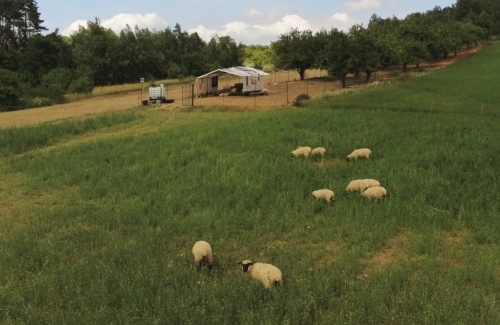
On March 28th, 2019, the representative of the National Fund for Environmental Protection and Water Management in the presence of representatives of the Complex of Swietokrzyskie and Nida River Landscape Parks checked out the tourist infrastructure and sustainability of the project`s effects.
The representative visited a farm in Skowronno Dolne where sheeps are bred and beeing grazed on the calcarous grassland.
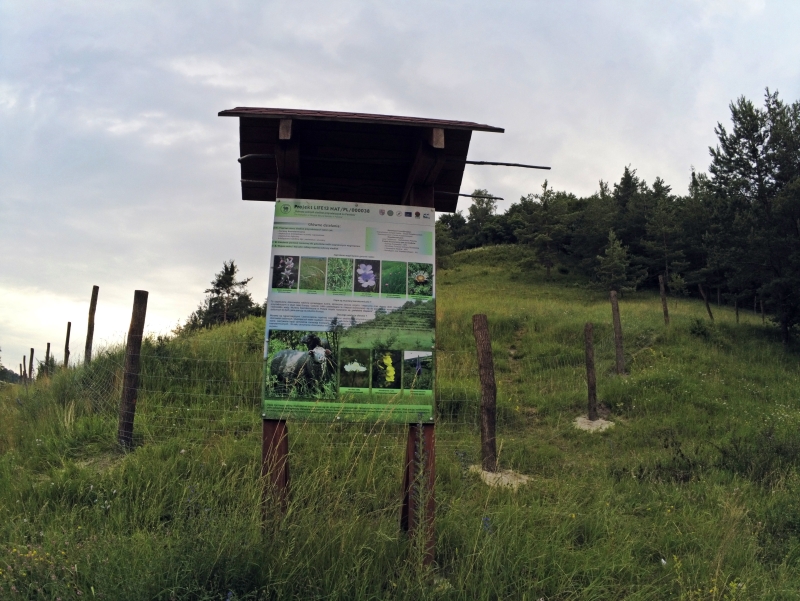
The inspection was positive, no irregularities were found and no objections were raised regarding the implementation of the project.
Sheeps on grazing.
The sheeps, which are grazing on the Ponidzie meadows, allows to protect valuable natural habitats of rare plants. Grazing is conducted as a part of the sustainability of the EU project LIFE13 NAT/PL/000038 „Protection of valuable natural habitats in Ponidzie”.
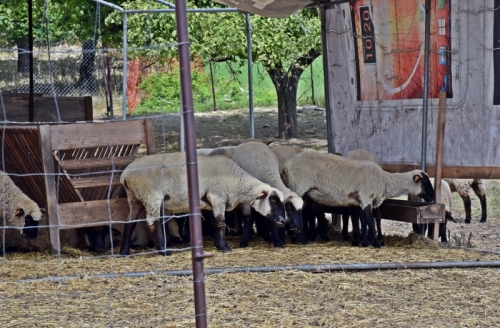
In 2016, we bought 200 black-headed sheeps. They were distributed to six local farmyards interested in participating in the project. Within a few years, the overall ammount of sheeps has doubled. Currently, 466 sheeps is grazing protected areas! Bigger herds entails expanding of grazing areas. At the end of 2018, it was 5.62 ha more and now, together with farmers, we are trying to graze on an additional several dozen hectares of calcareous grasslands!
There is the proverb: „Krakow wasn`t built in a day”. Slowly but effectively we strive for the basic goal: to restore extensive sheep grazing throughout the whole Ponidzie region!
- Anafi 1.5.4













